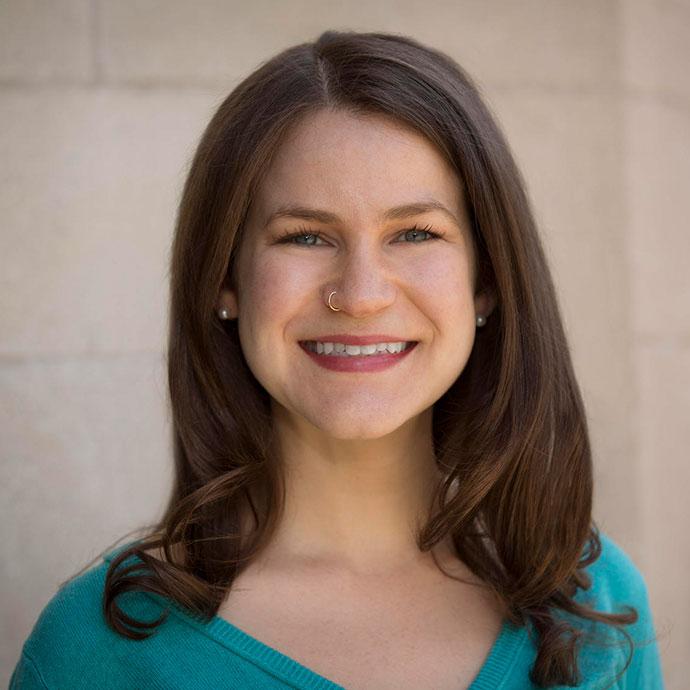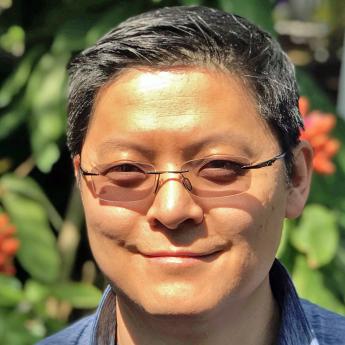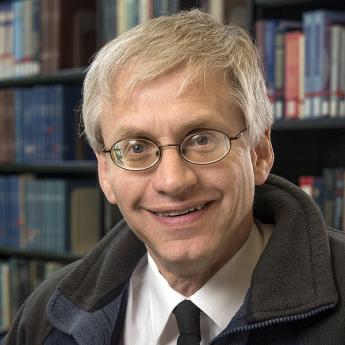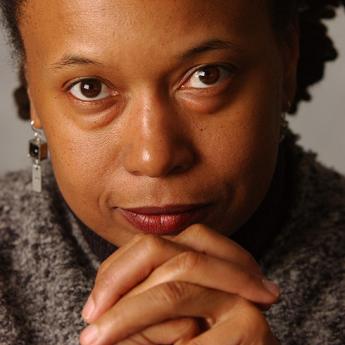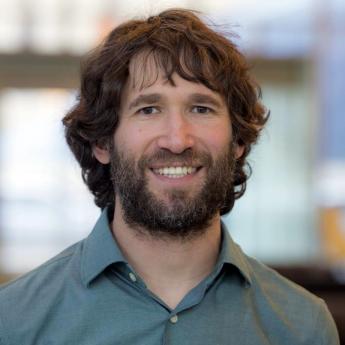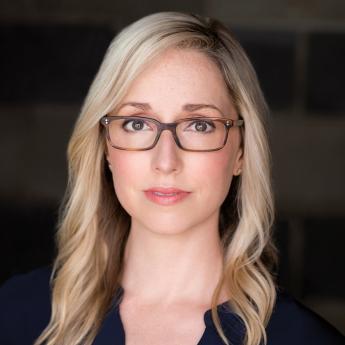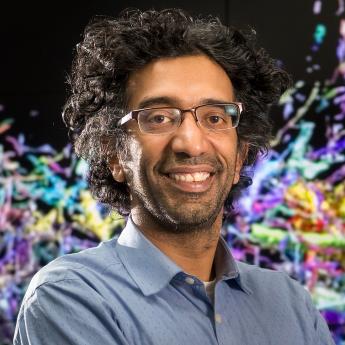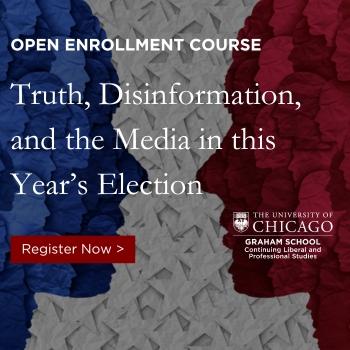Show Notes
It can seem like our culture is obsessed with our ability to focus. Why can’t we focus, how we can focus better, why is our lack of focus ruining society? There are best-selling books and apps that promise to teach us the secrets of paying attention. But what do we really know about what’s happening in the brain when we’re focused or not?
In a fascinating set of studies, University of Chicago neuroscientist Monica Rosenberg is using fMRIs to study the science of attention and answer all sorts of questions about focus. In this episode we ask her: Do some people have an easier time sustaining attention while others don’t, just because of the way their brain activity works? And if you have a harder time, are there things you can do to make your focus better?
Subscribe to Big Brains on Apple Podcasts, Stitcher and Spotify.
Subscribe to the Big Brains newsletter.
Please rate and leave a review for the Big Brains podcast.
(Episode published October 28, 2022)
Related:
Transcript:
Paul Rand: Big Brains is supported by the University of Chicago Graham School. We open the doors of UChicago to learners everywhere. Experience the University’s distinctive approach to inquiry through our online and in-person courses in the liberal arts, culture, science society, and more learn with imminent instructors and extraordinary peers in small interactive classes. Autumn registration is open now. Visit graham.uchicago.edu/bigbrains.
We live in a distracting world.
Monica Rosenberg: We all share an intuition that our experiences and our environments are influencing how we can focus.
Paul Rand: It’s also a world that demands and rewards our ability to focus, in school, at work, much of our success in life depends on our ability to pay attention.
Monica Rosenberg: And we have a lot of things competing for our attention now. We have phones, televisions, social media, emails popping up, Slack messages popping up.
Paul Rand: It can get so overwhelming that it can be hard to know what your ability to focus even is. But what if there was a way to hook up your brain to a machine and learn something about your capacity to pay attention without the distractions?
Monica Rosenberg: I’m really interested in studying the mind. How do our cognitive processes work? How do we pay attention? How do we remember information?
Paul Rand: That’s Monica Rosenberg, a neuroscientist at the University of Chicago and one of the leading experts on the neuroscience of focus and attention.
Monica Rosenberg: I tend to use those interchangeably, although I think that sometimes I slip into the language of just referring to attention or focus when really, I mean sustained attention. So maintaining that processing on relevant information over an extended period of time.
Paul Rand: It can seem like our culture is obsessed with our ability to focus. It’s in the news.
Tape: It might seem our ability to concentrate on one thing is collapsing.
Paul Rand: Books about it, dominate the bestseller list.
Tape: The new book from New York Times best selling author, Johann Hari is called Stolen Focus: Why You Can’t Pay Attention. He takes a closer look at why this is happening and how to get our concentration back.
Paul Rand: All of this may feel like reaction to our hyperactive lifestyles, but really it’s nothing new.
Monica Rosenberg: One of my colleagues gave a presentation in a graduate course I’m teaching, in which he showed an image, I believe it was from Scientific American from the early 20th century where somebody was wearing a helmet that was supposed to block out distraction.
Paul Rand: Humans have always been obsessed with focus.
Monica Rosenberg: Even 100 years ago, people were still feeling this pressure to stay focused and still feeling like there were things in their environment that were preventing them from doing that.
Paul Rand: But at least today, we have the tools to start to measure and understand what’s going on in our brains with attention and focus. And that’s exactly what Rosenberg’s lab does.
Monica Rosenberg: We can look at a person’s brain network fingerprint and predict with some degree of accuracy how well they’re able to focus, and in particular how well they’re able to perform on different attention tasks and even if they experience symptoms of ADHD.
Paul Rand: To some people have an easier time sustaining attention while others don’t, just because of the way their brains are organized? And if you have a harder time, are there things you can do to make your focus better?
Monica Rosenberg: It’s not that we’re born with this like skeleton brain network and we can’t do anything about it, but it really seems to be malleable, like it’s changing within somebody.
Paul Rand: From the University of Chicago Podcast Network, this is Big Brains a podcast about the pioneering research and the pivotal breakthroughs that are reshaping our world. On this episode, the science of focus. I’m your host, Paul Rand.
We don’t often think about it, but we carry around one of the greatest scientific mysteries with us every single day. It’s how our brains work. Monica Rosenberg, however, hasn’t been able to stop thinking about that mystery since high school.
Monica Rosenberg: I grew up in Rhode Island and I was walking around Brown campus in high school and I came across a cognitive science building and I thought, what is cognitive science? I don’t know what that is. And I started reading about it and I got really interested in this idea that our brain is just like another organ of our body. It’s like meat in our skulls, but somehow it gives rise to really complex cognitive processes, it gives rise to our consciousness.
Paul Rand: I’ve never heard anybody describe a brain as meat in our skulls. That must be a very scientific term.
Monica Rosenberg: Yeah, exactly. There’s a great science fiction story that I actually have undergraduate students in a class that I teach read about how aliens from a silicon based planet are totally baffled by the fact that meat can give rise to these complex processes. So, that was actually kind of like how I got interested in these questions.
Paul Rand: Out of all the possible questions, Rosenberg mainly focuses on one, the neuroscience of attention.
Monica Rosenberg: Attention has in our field been considered famously difficult to define. One of my favorite definitions comes from a review paper by my PhD advisor, Marvin Chen and colleagues, and they talk about attention as the way that our brain controls its own information processing. So this idea that there’s too much in our environments for us to process, but our attention helps us select relevant information, ignore irrelevant information, maintain focus over time, so maintain that interest or processing on relevant information over longer periods of time. And that’s the kind of attention in particular that my lab studies.
Paul Rand: Defining attention is one problem, but measuring it is a whole other issue.
Monica Rosenberg: So my lab uses techniques such as functional MRI, which measures a proxy for brain activity while people engage in cognitive processes to better understand how those processes work and how they’re instantiated in the brain.
Paul Rand: Now, most of those are probably familiar with an MRI, but what’s an fMRI
Monica Rosenberg: Yeah, so it’s the same machine as an MRI, but it’s measuring a different signal. So if you get an MRI of your knee or even your brain structure that’s taking a picture of particular parts of the body. But when we measure functional MRI data, we’re actually characterizing how blood flow in the brain is changing over time. And the reason that’s relevant for brain activity is the way that blood is moving around the brain is a proxy for neural activity. When a part of the brain is active and neurons are firing there, blood with oxygen is sent to that part of the brain, and that’s what we’re measuring with fMRI. So it’s a proxy for neural activity.
Paul Rand: What’s really fascinating though is that not everyone’s brain looks the same. In fact, we’re all pretty unique.
Monica Rosenberg: It turns out if we measure a person’s brain network, so how different parts of the brain interact with each other, that is very stable over time, and it’s also distinct for every person. So, we can look at a pattern of how a person’s different regions of their brain are interacting and use that to pick them out from a group, just like a fingerprint.
Paul Rand: It’s sort of like a detective, Rosenberg can use that fingerprint to learn all sorts of things about you, including your ability to pay attention and to focus.
Monica Rosenberg: So my lab has shown that differences in these brain network fingerprints between people are predictive of how well they can maintain focus over time. And it turns out that we can look at a person’s brain network fingerprint and predict with some degree of accuracy how well they’re able to focus, and in particular how well they’re able to perform on different attention tasks and even if they experience symptoms of ADHD.
Paul Rand: Here’s how it works.
Monica Rosenberg: We brought 25 young adults into the lab and we measured brain activity with fMRI while they were doing this attention tasks. They were just looking at pictures of city scenes and mountain scenes, pressing button to cities, not to mountains. Now this got pretty monotonous. They did the task for about 36 minutes. And although this is a somewhat contrived lab based task, it turns out that performance on this task is related to our ability to maintain focus in different kinds of real world scenarios.
Paul Rand: Say I brought 10 people into the lab and I gave them this test. They would all not perform the same, would they?
Monica Rosenberg: Exactly, yes. And we could in that group of people identify brain networks that changed with changes in performance. In other words, brain networks that were stronger in people who performed better on the task.
Paul Rand: But here’s where things get really interesting, not only did they measure these networks in people while they were performing the task, but also when they were just sitting in the MRI doing nothing at all.
Monica Rosenberg: We can actually measure somebody’s brain network patterns while they’re not paying attention to anything in particular, they’re just lying in a scanner trying to hold, still trying not to fall asleep, and we can still predict how well they can focus from these brain patterns.
Paul Rand: Meaning they must be measuring some sort of underlying attention capacity.
Monica Rosenberg: So while you’re just sort of lying, relaxing in an MRI scanner, we call that resting, so while you’re resting, we can still measure these brain networks that are predictive of attention function.
Paul Rand: But how could Rosenberg know her team was really measuring attention and not something specific to those people being studied.
Monica Rosenberg: I mentioned that these were 25 young adults, that’s a relatively homogeneous population. The human experience is more than just this young adulthood and 25 people might not give us a full picture of individuals beyond that small group. And so in order to really probe the robustness and generalizability of these brain networks, we actually look at the strength of the brain networks in completely different individuals. So we identified brain networks that were related to task performance in a subset of our participants. And then we ask if we look at the strength of those same brain networks in other people who are totally new, who we hadn’t looked at in the first part of the analysis, could we predict how well they performed? And it turns out that we could.
Paul Rand: But there was another problem.
Monica Rosenberg: But then we thought like, wait a second.
Paul Rand: What if they weren’t actually measuring attention at all, but really just measuring people’s ability to do well on a test where you have to separate indoor and outdoor pictures?
Monica Rosenberg: Are we just predicting performance on this like idiosyncratic lab task that we have found to be reliable?
Paul Rand: To answer that they came up with a rather clever test, correlate their network data with MRI scans of people with ADHD.
Monica Rosenberg: If we take that same brain network and we say, okay, in this particular group of individuals, it predicts performance on this lab based sustained attention task. But in this other group of individuals, the same brain network is related to ADHD symptoms. It must be predicting something that’s shared by those two constructs.
Paul Rand: Rosenberg’s team has correlated these networks to dataset after dataset, different ages, populations, and yet always with the same results.
Monica Rosenberg: We have applied the same brain network model to other kinds of data sets to predict performance on other tasks that measure sustained attention. And so this was telling us, we haven’t just identified a network that’s predicting task performance but it’s really capturing something more general about sustained attention function across different populations.
Paul Rand: But when you start to think about it, that begins to raise a somewhat terrifying question.
Monica Rosenberg: Are we all just born with a brain network fingerprint that relates to our attention and there’s nothing we can do about it?
Paul Rand: The answer after the break.
Carry The Two. Carry The two is the show that pulls back the curtain to reveal the mathematical and the statistical gears that turn the world co-host Sadie Witkowski and Ian Martin bring unique perspectives from the fields of mathematics and statistics to convey how mathematical research drives the world around us, with each episode tackling a different topic. Subscribe to Carry The Two part of the award-winning University of Chicago Podcast Network.
Big Brains is supported by the University of Chicago Graham School. Are you ready to open the door to new learning in your life? Experience inquiry that is steeped in the UChicago tradition of powerful discovery and exploration. Select from courses and programs in their liberal arts, culture, science, society, and more. Customize your lifelong learning journey with UChicago Graham. Online and in-person offerings are available. Learn more at graham.uchicago.edu/bigbrains. So far we’ve talked about using these brain fingerprints to predict our ability to focus, but the question may have already come to your mind. What else can they tell us?
Monica Rosenberg: One thing that’s great about these brain fingerprints, especially when they’re measured while people are just resting and not doing anything in particular, is that we could theoretically use them to predict an infinite number of things about somebody. And so we have shown that they are robust predictors of how well people maintain attention, but other groups have shown that we can use different aspects of those same patterns to predict performance on tasks assessing creativity. And so I think that that’s where it starts to get exciting, this idea that we have this pattern and then it’s not just useful for one kind of prediction but we can learn many different things about somebody from that same pattern.
Paul Rand: Which sort of makes the mind start to reel with implications and applications of this work.
Monica Rosenberg: Yeah, I mean, you could imagine a world in which we’ve really probed the sort of future predictive power of these networks.
Paul Rand: For instance, a world in which all children go through an fMRI to measure their resting sustained attention network before starting school, and our education system being able to get resources to kids who may struggle earlier. But Rosenberg says that this may be letting our imaginations run away from us too soon.
Monica Rosenberg: Think it’s important to keep in mind is that these kinds of brain scans measuring somebody’s brain fingerprint isn’t a crystal ball. Our predictions from brain activity are only as good as the measures that we’re predicting. So for example, we know that clinical assessments of ADHD for example, are influenced by things other than attention dysfunction. The demographics of the individual being assessed can influence the kind of clinical scores that they get on these measures. And if we’re training our brain models to predict those outcomes, they’re going to have the same potential kinds of biases or other influences baked in. So I think that we need to think about our behavioral measures and our brain measures as existing in tandem. It’s important to be cautious about these things. So I think it’s theoretically interesting, but not ready for deployment in clinical translational settings.
Paul Rand: But of course, this work could go well beyond just their predictive power.
Monica Rosenberg: It’s highly appealing to be able to look at brain activity and know with some degree of certainty if somebody is engaged or disengaged.
Paul Rand: And in a recent study, Rosenberg’s lab has done just that.
Monica Rosenberg: We’ve started to ask, how does our attention change in more naturalistic contexts? So while we watch movies, listen to podcasts. If we measure changing brain networks while people are watching movies, listening to podcasts, can we predict how engaged they are? And it turns out that we can in a way that is sort of surprising.
So in this study, we actually analyze data that was collected by other researchers while people were in the MRI scanner as they watched the first episode of the BBC TV show, Sherlock. If you’ve seen it.
Sherlock Holmes: The name’s Sherlock Holmes and the address is 221B Baker Street.
Monica Rosenberg: So right in Sherlock, there’s some suspense.
Sherlock Holmes: All of his victims disappeared from busy streets, crowded places, nobody saw [inaudible 00:16:33].
Monica Rosenberg: There’s a narrative that evolves over time, there’s different characters who interact.
Tape: Have you talked to the police?
Sherlock Holmes: Four people are dead, there’s no time to talk to the police.
Tape: So why are you talking to me?
Sherlock Holmes: Mrs. Hudson took my skull.
Monica Rosenberg: And so Hi Yung Song, a fourth year PhD student in my lab who led the study measured how people’s engagement was changing during that TV show.
Paul Rand: They had one group rate how engaged with the narrative they were while another group was just hooked up to an MRI scanner.
Monica Rosenberg: There is a scene where Sherlock is looking for clues and he discovers a corpse.
Sherlock Holmes: It’s murder. All of them, I don’t know how. They’re not suicides, they’re killing, serial killings. Got ourselves a serial killer. I love those. There’s always something to look forward to.
Monica Rosenberg: And you can actually see a spike in engagement, so this is sort of giving us a peak into what’s going on under the hood to help us understand when people are focused, when they’re not.
Paul Rand: Fascinatingly, the reported engagement from the first group synchronized with the MRI scans of the second.
Monica Rosenberg: We can take patterns of changes in these brain networks that we measure with MRI and predict whether people are seeing a part of a particular movie that’s more engaging or one that’s less engaging. But even more than that, the same brain networks actually predicted what they remembered later on about the narrative. So, we analyzed data where people were just saying, they were explaining verbally everything they remembered from the show. And it turns out that moments of time that were more likely to be remembered were actually moments of time where we saw brain networks that were indicative of more engaged focus. And so we’re using these methods to learn about not just how people attend, but also what they remember later on. And how engaged people are is driven in part by the emotionality of the narrative.
So in this new project, we’re trying to ask whether we can build models that actually predict positive and negative emotion, and whether those overlap with the attention networks in the way you might predict.
Paul Rand: I guess from on a flat out implications point of view, if I am a TV producer, I’m going to come to you and say, help me create the ultimate TV show. Could you do that?
Monica Rosenberg: It’s such a great question. And so one thing we’re thinking about a lot is like what does it mean to take those moments out of context? So one reason that we hypothesize the different parts of a movie are maybe engaging is like sometimes it might just be there’s a loud sound or a bright image, but sometimes and often it’s like because of how central that particular moment is to the plot. So if you sort remove from the context, you might be losing what is driving the engagement. So we are doing more work on saying, well, what’s driving these moments of time when people are more engaged?
Paul Rand: But if our fingerprints can at least show when we’re paying attention or not, could employers use this technology to track when employees or folks to work?
Monica Rosenberg: I hope not.
Paul Rand: Rosenberg says not to worry.
Monica Rosenberg: These measures all rely on behavioral measures. And so while I think that these studies are really helpful for answering theoretical questions about how does our brain pay attention to things, what areas of the brain are involved in attending to different kinds of information? The practical applications I think are at this point of this kind of work, the applications are more theoretical rather than practical.
Paul Rand: Plus the costs alone would keep that dystopian future at bay, at least for now.
Monica Rosenberg: They’re very expensive. So it costs about $500 an hour, often more to collect this kind of data.
Paul Rand: If there are folks that are listening and say, well, this is really fascinating. I’d like to get a sense of my own brain fingerprint, and I can come up with the 500 bucks. Would you say, go do it?
Monica Rosenberg: Interestingly, so I have brain data for myself from being in pilot scans, working out studies at the MRI center, and I’ve never put my brain data into these kinds of models. And I think that there’s a couple of reasons. So practically, these kinds of predictions require a lot of data processing that, at least to my knowledge, there’s not a route by which you could elect to go to a commercial or a clinical facility, get the data and have it spit out your brain fingerprint. The other thing is that you probably have a sense of how well you focus. So we talked earlier in the conversation about this idea that we might intuit, I have a short attention span, or I have a lot of trouble focusing in a particular class. If the outcome conflicted with your interpretation of your own abilities, it’s not clear that that’s more accurate or closer to a ground truth. I mean, what’s really important in navigating the world is how well we actually pay attention to things.
Paul Rand: The world we navigate is built around our ability to pay attention and focus. It’s a requirement for almost any high paying job. It’s a requirement for tracking finances or planning life events. But if our ability to focus can be measured by a unique and stable brain fingerprint. Does that mean that we’re completely stuck with whatever we happen to be born with?
Monica Rosenberg: That’s sort of not that optimistic. But it turns out that actually these brain network fingerprints can change over time within individuals. And one way we’ve found that is by looking at data collected from people who participated in a study versus people who were given a single dose of methylphenidate or Ritalin before a brain scan. And we know this drug enhances attention function in individuals diagnosed with ADHD. And what we find is that the drug is actually changing people’s brain fingerprints to look more like individuals who have an easier time maintaining focus. And so this is giving us some evidence that these patterns are malleable within a person, and it’s not just the case that we’re stuck with one pattern and we can’t do anything about it. But we’ve also found that even in the absence of pharmacological interventions, these brain networks do change over time.
Paul Rand: So as we start getting older, does our attention improve? Does it lessen? Does it change in how we adjust it? How does that work?
Monica Rosenberg: Yeah, So this is actually one of my favorite reasons to study sustained attention is for many, many cognitive processes like different forms of memory and other forms of attention, we see that function actually peaks pretty early in adulthood. So in our 20s. And then afterwards, performance on tasks that assess those abilities declines over the lifespan. But it turns out that sustained attention actually peaks later in life, in the sort of 30s or 40s. And I think that that’s a combination of the different areas of our brains that are involved in these processes, but also different strategies. So, we learn things over the course of our lifetime, that allow us to better select relevant information and resist distraction.
Paul Rand: So if these networks are at least somewhat malleable, what can we do to improve our attention?
Monica Rosenberg: Yes, I get this question a lot and it’s some concrete things that we can all do are getting enough sleep. So we know from lots of studies that lack of sleep, even just being a little bit tired, really has an impact on our ability to filter out distractions. And so things like being healthy, exercising, getting sleep, those are all good things that can benefit attention with pretty low risk of side effects.
They benefit us in a lot of ways.
Another very concrete step we can take is to try and avoid multitasking. When we try and multitask, what our brains are doing are just switching between the tasks. And every time we switch from one task to another, we have a little bit of a cost in terms of efficiency. So, we have to disengage from email and reengage with our text messages for example. We would actually get more done and be more efficient if we spent a longer amount of time on each task separately rather than to trying to switch between them.
Paul Rand: There are others, of course, that are trying to promise they can help with this, IE some different apps like the Luminosity of the worlds and so forth. Do you look at those and say, oh, great idea, or do you look at that and say, don’t waste your time?
Monica Rosenberg: So there’s been a lot of interest in attention research and other fields in whether these kinds of trainings actually benefit our attention and our cognitive processes. And there’s a recent meta analysis of research in this field that suggests that on the whole, practicing these kinds of tasks makes you better at those tasks. So for example, if I play a phone game and I really focus on it and I do it often, I’m going to get better at that game. But it’s pretty uncommon for those improvements to transfer to other kinds of tasks. And often when we do these kinds of things, that’s our goal is to improve not just on a particular task, but in other aspects of our lives. And I will say I have not seen strong evidence that training on some kinds of games or tasks is effective for transferring to other aspects of our lives.
Paul Rand: Obviously, Rosenberg’s work is fascinating and people are starting to notice this year she receives a prestigious Sloan Research Fellowship.
Monica Rosenberg: One of the unique things about this award is that it comes with funds to support research that aren’t tied to a very particular project. So it actually gives you the ability to be a little bit more riskier or try something out. Which is exciting because it’s allowing my lab to ask questions that are relatively new. So for example, we’re thinking about projects that ask how our changes in attention over time impact other processes like learning. So for example, it fills intuitive that changes in attention over time are going to have big consequences for what we learn from our environment.
Paul Rand: Good. If I came back to you in 10 years and said, tell me what you’ve accomplished or what you’ve worked on, what would you love to be able to tell me you did?
Monica Rosenberg: Oh, that is a really great question. I think I would love to be able to made contributions in understanding not just how people differ in their focus, but why. Maybe two people have a similar attention function in adulthood, but how did they get there? What was different in their trajectories? How did their experiences interact with their preexisting brain networks to support where they are? And so I think really diving more into the question of why. Why do we have the brain fingerprints that we have? Why are we better able to focus in some situations and not others? That would be a big accomplishment if I could come back and help answer some of those why questions.
Paul Rand: All right. We’ll check back with you in 10 years. See how you did?
Monica Rosenberg: Great.
Paul Rand: Okay.
Matt Hodapp: Big Brains is a production of the University of Chicago Podcast Network. If you like what you heard, please leave us a rating and review. The show is hosted by Paul M. Rand, and produced by me, Matt Hodapp and Leah Ceasrine. Thanks for listening.
Episode List
The Hidden Dangers of Artificial Intelligence with Ben Zhao (Ep. 21)
A computer scientist at UChicago explains how artificial intelligence can break crucial systems and be broken itself.
Lessons From Our Country’s Largest School Closing with Eve L. Ewing (Ep. 20)
Eve Ewing explains how race, history and ‘institutional mourning’ intersect in the largest mass public school closing in U.S. history.
Simple Solutions to Address Social Issues with Harold Pollack (Ep. 19)
Prof. Harold Pollack promotes ‘evidence-based optimism’ to tackle our most complex social issues—from finances to crime to health care.
What We’re Getting Wrong About Millennials with Cathy Cohen (Ep.18)
A leading scholar on race and politics says some of our assumptions about millennials are all wrong.
What Ripples in Space-Time Tell Us About the Universe with Daniel Holz (Ep. 17)
UChicago cosmologist discusses discovery of gravitational waves and colliding black holes.
Rise of the White Power Movement with Kathleen Belew (Ep. 16)
Kathleen Belew traces the history of white supremacy, from Vietnam through the Oklahoma City bombing
Climate Change’s Human Cost With Michael Greenstone (Ep. 15)
Economist discusses global energy, impact of air pollution on society and why scientists should talk clearly about climate change
David Axelrod on Why ‘Democracy is Messy’ and the Future of Politics (Ep. 14)
In this alumni edition of Big Brains, David Axelrod discusses the midterms, the rise in divisive politics from Obama to Trump and why young people make him optimistic about our future
How Talk Builds Babies’ Brains with Dana Suskind (Ep. 13)
Physician and author gives advice to teach kids from day one and discusses her transformation to a social scientist.
Mapping the Human Brain with Bobby Kasthuri (Ep. 12)
UChicago neuroscientist describes a high-tech effort to map the brain’s trillions of neurons and understand what makes humans unique.
